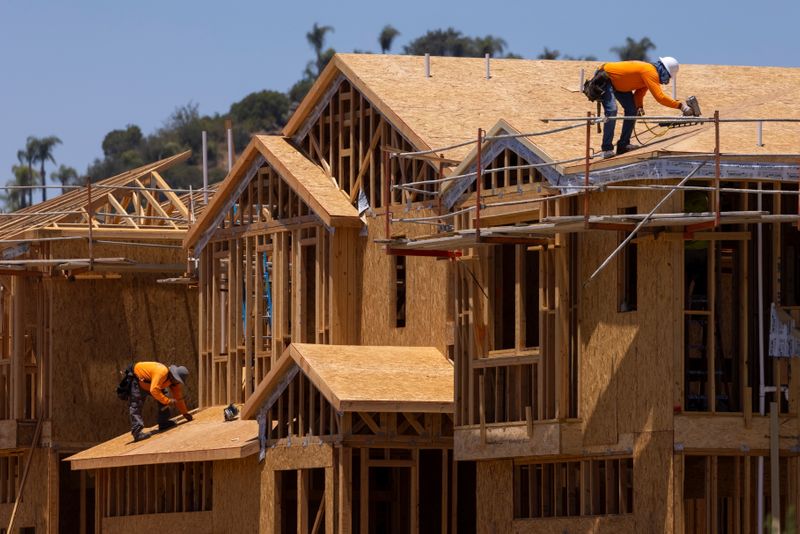WASHINGTON (Reuters) - U.S. construction spending unexpectedly fell in May as gains in private homebuilding were offset by persistent weakness in outlays on nonresidential structures and public projects.
The Commerce Department said on Thursday that construction spending dropped 0.3% after edging up 0.1% in April.
Economists polled by Reuters had forecast construction spending rising 0.4%. Construction spending, which accounts for about 3.6% of gross domestic product, increased 7.5% on a year-on-year basis in May.
Spending on private construction projects fell 0.3%, weighed down by a 1.1% drop in private nonresidential construction like gas and oil well drilling. Business investment on nonresidential structures has declined for sixth straight quarters. Private construction outlays increased 0.3% in April.
Investment in residential projects rose 0.2%, lifted by a 0.8% increase in single-family homebuilding.
Demand for housing remains robust, but expensive building materials, especially framing lumber, are constraining builders' ability to ramp up construction.
The government reported last month that homebuilding rose moderately in May, while permits for future home construction fell to a seven-month low. Housing completions also declined while the number of homes authorized for construction but not yet started rose to the highest level since 1999.

Outlays on residential projects advanced 0.7% in April.
Spending on public construction projects fell 0.2% in May after decreasing 0.6% in April.